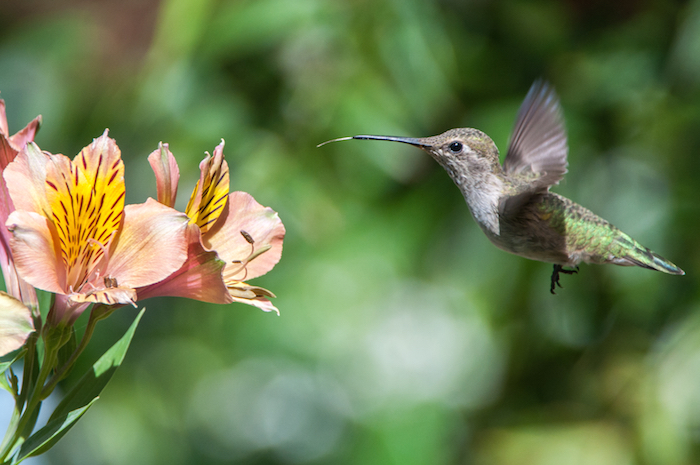
Anna’s Hummingbird Female Feeding from Peruvian Lily
When Columbus arrived in the Americas thinking he’d found a new route to India, he marveled at another new discovery, too. He wrote in his diary of little flying gems, the ones that we call hummingbirds. Of course, the locals had loved hummingbirds long before Columbus. Aztec kings wore whole cloaks made of their shimmering skins. In what became New England, Native Americans wore hummingbird earrings. After Columbus, the pope and then fashionistas throughout Europe soon included hummingbird skins in their décor.
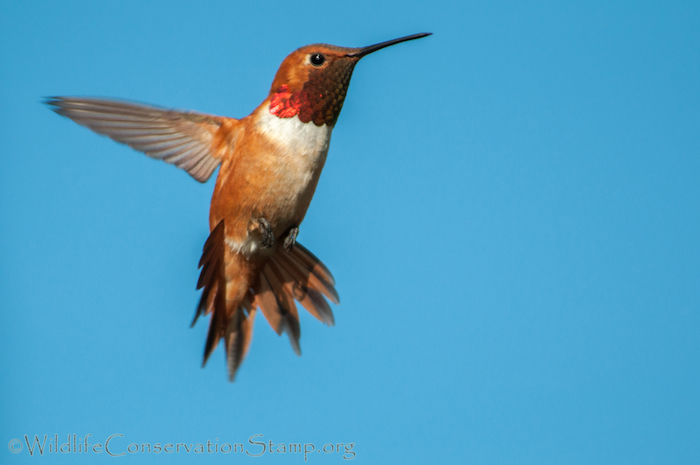
Rufous Hummingbird Male
The fascination is understandable. Smaller than any other bird, more brilliant, and, for those who saw them alive, capable of flying in one place, these creatures were magical! But they are even stranger than the rapt observers of old could appreciate.
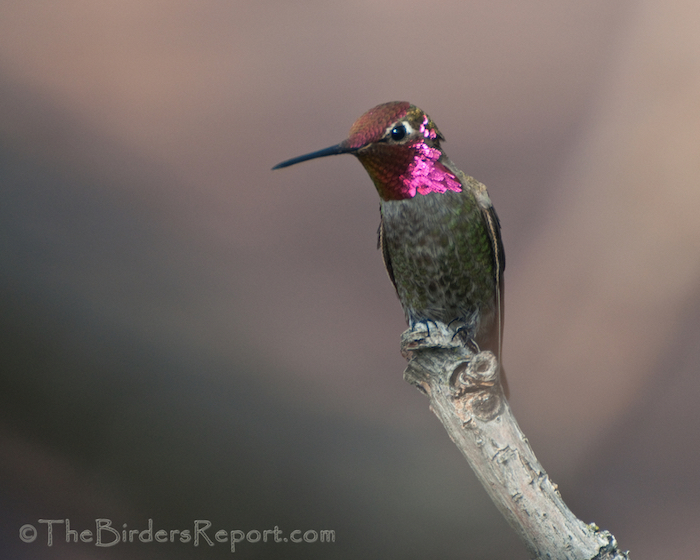
Anna’s Hummingbird Male
Being so small, and warm-blooded, requires a high metabolism. Variably among their three hundred plus species, hummingbirds live at 10 heartbeats and two breaths per second, conditions that would kill a human. At such high rates, they burn their energy fast, and can begin to starve in as little as fifteen minutes. To survive through the night, some species routinely go into torpor, a sort of mini-hibernation, to internal temperatures as low as 48 degrees, slowing their body processes and conserving energy until the next day of frenetic feeding.
The feeding itself includes catching small insects from the air—they do need protein, after all—and famously, drinking the high-energy nectar of flowers. Plants, of course, benefit from hummingbird visits because, just like bees, the hummingbirds pick up pollen and spread it about, fertilizing other flowers. These bird-loving, or “ornithophilous,” flowers often co-evolve with certain hummingbird species, matching, say, curved bills with curved corollas, to maximize nectar-gathering and pollination for just those birds and flowers.
To be able to gather nectar, hummingbirds have a unique hovering capacity. Most birds flap their wings up and down and the physics of the Bernoulli principle keeps them afloat as they go forward. But to hover, hummingbirds have an extra capacity. After their down and forward wingbeat, they can flip their wings over to arc down and backward, creating a figure-eight motion that holds them in place. Of course, all of this happens at some seventy wingbeats per second, so it wasn’t discovered until high speed filming allowed researchers to slow the blur to a visible level.
Hummingbird coloring includes pigments like that of most living things. But with a rare level of expertise, their feathers also create color with refraction. Sunlight bouncing off the birds is bent by minuscule feather cells that act like prisms. Depending on the species, male hummingbirds’ throat feathers, called a gorget, shine with particularly iridescent brilliance. No fools, males orient themselves opposite the sun to flash most brightly to females they are courting.
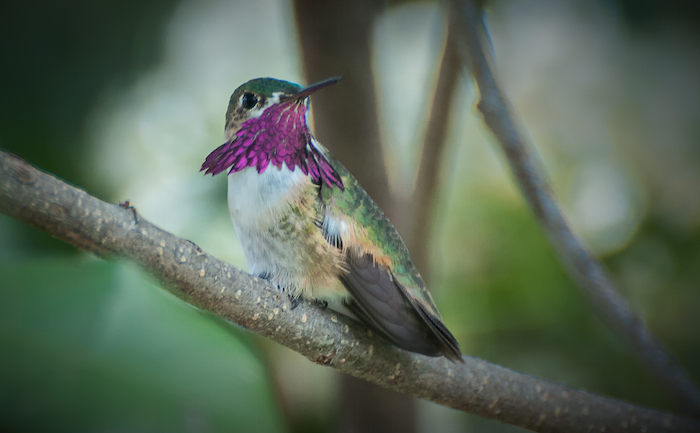
Calliope Hummingbird Male
The old joke—that hummingbirds hum because they don’t know the words—really isn’t right. They do know the words—and their languages are as bizarre as so many things about them. Many talk with their feathers, with particular feather-hums unique to different species. Many talk with flight patterns. A male Anna’s hummingbird, the only hummer species to stay in our area through winter, dances high into the air near a female he is courting, then dives down into a j-curve in front of her. In case that alone is not enough to impress his heart-throb, at the bottom of his dive he pops the air with his outer tail-feathers, creating a loud, staccato explosion that we unfeathered humans have trouble recognizing as sound from very small quills.
Alas, as far as we know, his ardor does not extend to caring for the young. The female builds her tiny nest of plant parts and spiderwebs, and tends her two eggs and hatchlings for over a month. Gardens with the tubular flowers that hummingbirds love can help her succeed in raising her little ones.
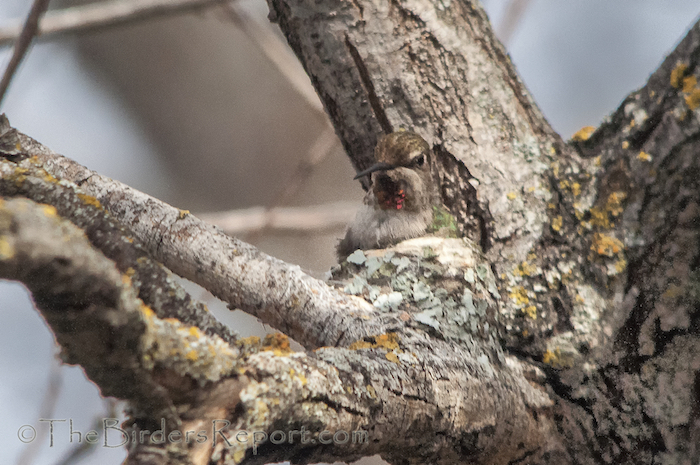
Anna’s Hummingbird Female on Nest

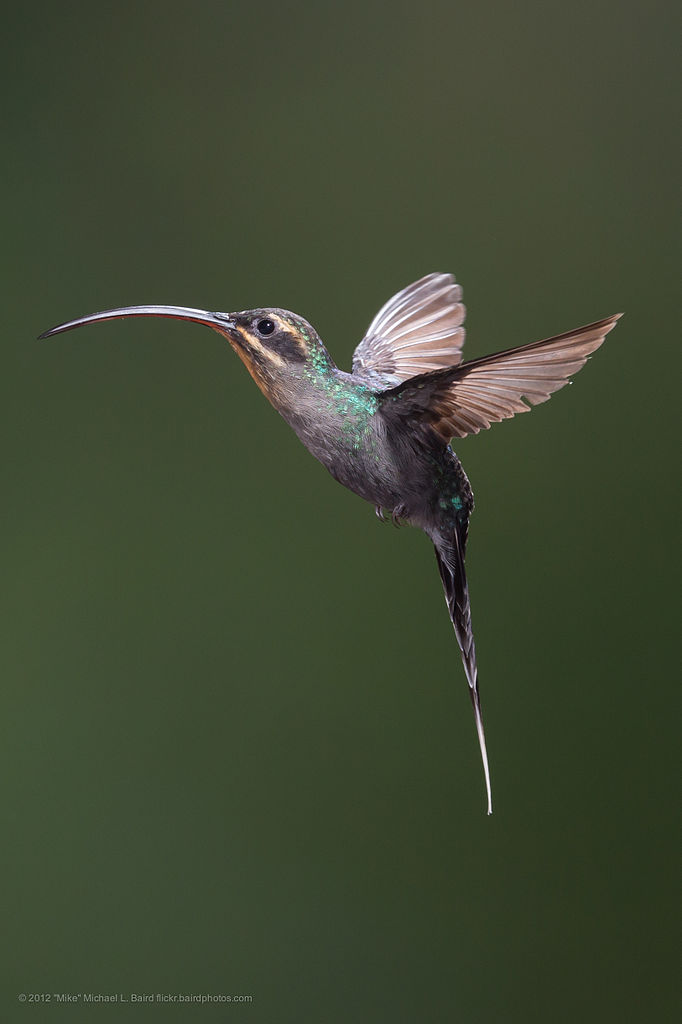
No comments yet.